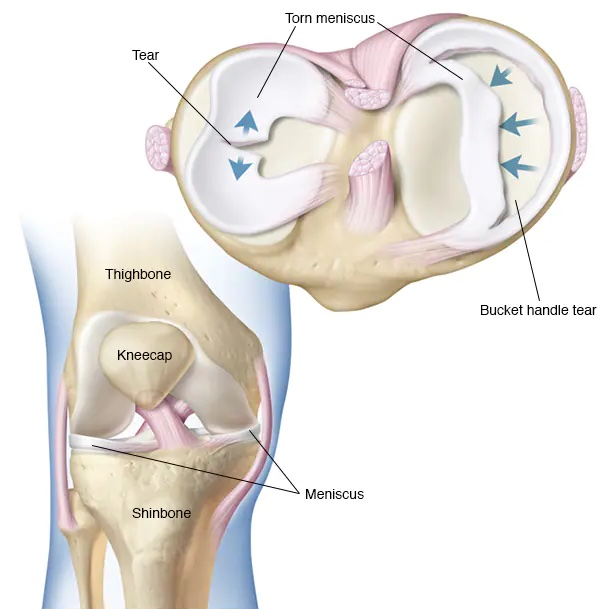Best Meniscus Surgery In Jaipur | Dr Amit Meena | Knee Specialist
Meniscus Injury Overview
The knee's medial and lateral menisci are vital shock absorbers that safeguard the cartilage and prevent the onset of osteoarthritis. They also contribute significantly to knee stability, making them a fundamental part of knee anatomy. Loss of the menisci can lead to early osteoarthritis and knee instability, particularly when combined with ligament reconstruction.
Menisci consist of fibrocartilage and have a meager blood supply. Consequently, meniscal tears along the edges, especially on the inner side of the knee, typically have a low likelihood of spontaneous healing. Surgical intervention is often necessary to address meniscal tears, particularly when they are closer to the joint lining, known as meniscocapsular separations.

DESCRIPTION OF MENISCUS SURGERY.
In general, Dr. Amit Meena will always try to preserve the meniscal tissues to prevent further development of osteoarthritis, especially if there is a concurrent ACL reconstruction performed to prevent the graft from stretching out over time. He has found the use of multiple inside-out sutures allows the meniscus to be put back into its anatomic position and also provides extra stability to the meniscus such that early range of motion can be implemented.
In the case of a non-repairable tear, Dr. Amit Meena will try to preserve as much meniscal tissue as possible and will trim and contour the area of the tear such that it has a lower risk of tearing further over time. In all patients who have meniscal tissue removed, they must be educated to make sure if they have any problems with pain or swelling that they return to be evaluated. This is because the early signs of osteoarthritis are pain and swelling with activities. It is important to have a proper assessment to evaluate if the patient has post-meniscectomy arthritis developing to the point where the use of an unloader brace, osteotomy or meniscus transplant surgery may be necessary to slow the further progression of osteoarthritis.
Dr. Amit Meena recommends patients be periodically observed with Rosenberg x-ray views to look for joint space narrowing and alignment x-rays to determine if they are malaligned for that particular compartment where the meniscus has been removed.
Dr. Amit Meena will typically do a repair of peripheral tears of the meniscus, large horizontal tears, root detachments and occasionally for radial tears, especially of the lateral meniscus, in young athletic patients. He performs the majority of meniscal tear treatments using an inside-out approach with a surgical incision on the inside or outside of the knee with needles placed into the tear which are then pulled outside the joint and tied directly over the joint lining. The use of non-absorbable sutures in this circumstance are incorporated because of the reports of higher risks of tearing a meniscus repair over time in patients who have absorbable sutures utilized.
The rehabilitation program for postoperative meniscus surgery depends upon the other concurrent surgeries. It has been well demonstrated for patients with a meniscus repair and a concurrent ACL reconstruction that one can start early weight bearing and range of motion and have a very high chance of healing. We believe this is because of the growth factors and stem cells that are released from drilling the ACL reconstruction tunnels.
Post-Operative Protocol for Meniscus Surgery
Following an isolated meniscus surgery repair, we initiate a carefully structured recovery plan. In the initial two weeks, patients work on achieving a range of motion from 0 to 90 degrees, gradually increasing knee flexion as tolerated. However, they must strictly adhere to non-weightbearing status for six weeks post-surgery.
We advise patients who've undergone meniscus repairs to refrain from activities like deep squatting, sitting cross-legged, or engaging in heavy lifting and squatting for a minimum of four months postoperatively. This precaution is taken to optimize the healing of the posterior horn of the meniscus.
For cases involving concurrent meniscal root repairs or radial repairs, we intentionally slow down the rehabilitation process to enhance the likelihood of successful healing.
To achieve the best surgical outcomes, a well-guided physical therapy protocol is crucial. Patients must diligently follow this protocol, avoid high-impact, contact, or twisting activities, and adhere closely to the recommended rehabilitation program.



Comments
Post a Comment